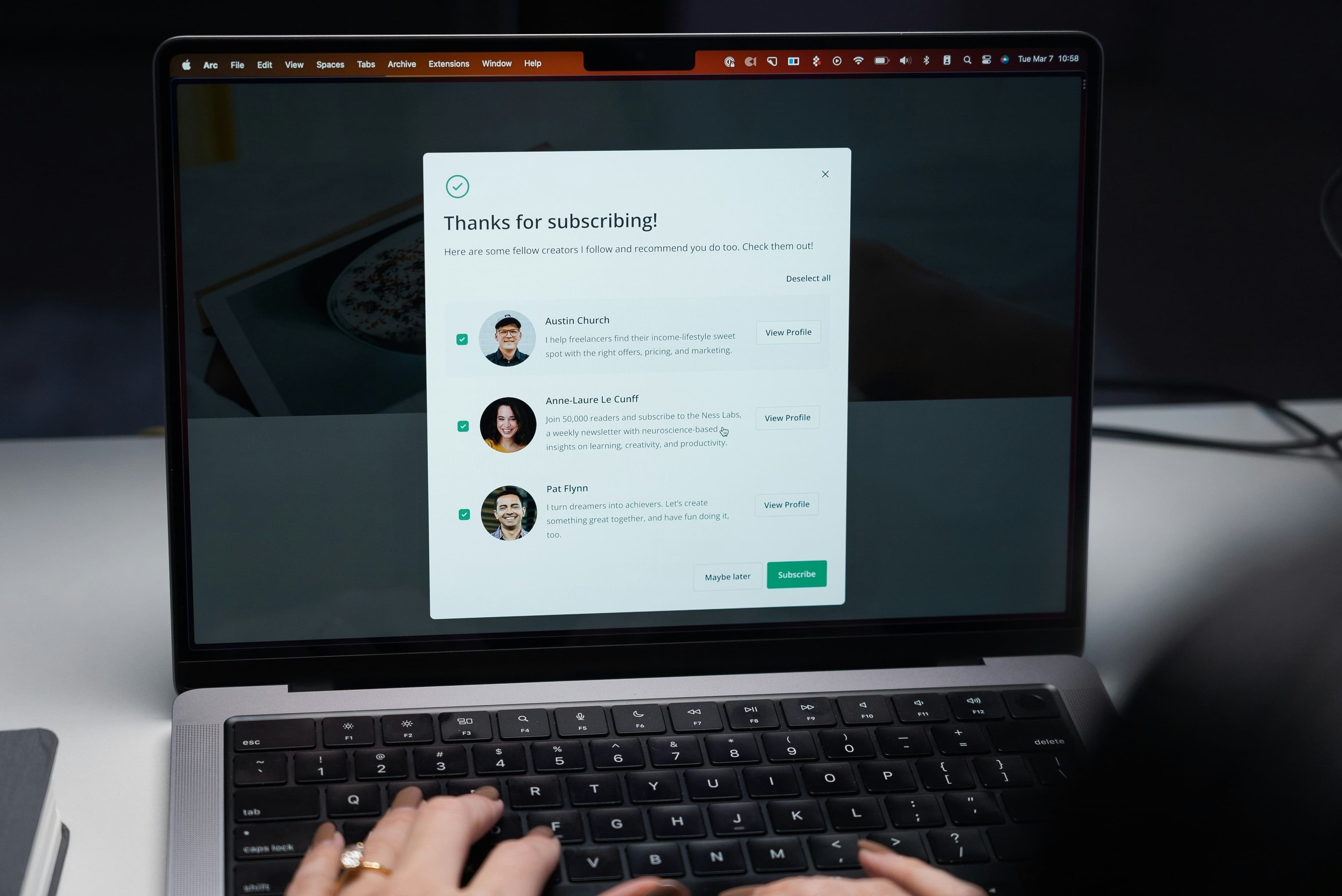The Creator Economy’s Next Wave: Why Now Is the Moment to Build
The creator economy experienced a sharp drop in investment in 2022-2023 driven by macroeconomic factors and a loss of trust in the industry.
But downturns also reset the playing field. We believe the creator economy is now entering its next major wave, and this time the opportunity is larger, deeper and more durable than before.
1. The Attention Crisis: Why Brands Are Rethinking Distribution
For the last 20 years, consumer brands have been built on paid digital advertising as a reliable way to reach audiences and drive conversion. That model is falling apart.
Digital saturation: Consumers encounter thousands of impressions daily. Each impression has very little marginal incremental value anymore.
Declining ROI: Customer acquisition costs are ever-increasing. Attribution is harder to demonstrate.
Mediated discovery: With AI agents increasingly shaping discovery and purchase decisions, traditional brand storytelling will lose its edge. Agents don’t respond to aspirational campaigns, they optimise on data, price and objective criteria.
In his latest blog post, Joe pointed out that agentic AI will transform commerce by shifting it from human attention to agent-driven transactions. In this new reality, the question becomes: where does attention go? More and more, the answer is creators.
2. Community as the New Distribution Channel
Parallel to this attention crisis is a cultural one. In the midst of a loneliness epidemic, people are spending more time online, seeking belonging in smaller communities, and anchoring identity in digital spaces.
Creators form the nucleus of that movement. They're not just "influencers" sharing products anymore. They have transformed into community leaders, trusted points of access where users congregate, interact and buy.
This is showcased in the types of media users are consuming:
Live and interactive media (Twitch, TikTok Lives, YouTube Live) are booming, allowing for a direct connection between creators and audiences.
Users also follow creators into private communities: Discord servers, Patreon memberships, exclusive groups, where the place of connection is deeper and more intimate.
The data reinforces this trend:
There are now more than 63 million nano/micro-influencers (1k–100k followers) worldwide.
61% of consumers trust creators more than ads.
The top of the funnel is decentralising. Distribution no longer flows through ad platforms, it comes from communities and networks anchored by creators.
3. Generative AI: Fuel for the Shift
Until recently, producing professional-grade content was a privilege of scale. Producing high production-quality video, editing, and design required teams and budgets. Generative AI has changed that:
Small creators can now produce professional visuals with AI video and image tools.
A single piece of content can be repurposed into multiple formats instantly.
This changes the dynamics for both sides:
Creators can better serve brands, meeting higher content expectations at lower cost.
Brands can scale creator collaborations without relying on expensive agencies.
4. The Creator Stack: Still Underbuilt
In spite of all that, most creators (particularly small and mid-tier players) still have disconnected and largely ineffective infrastructures.
They juggle, on average, 10+ separate tools to handle editing, scheduling, outreach, payments, and community management.
Link-in-bio platforms are proving that consolidation is needed, but there isn’t a true operating system for creators.
Revenue models remain narrow: ads, sponsorships, and subscriptions often demand constant new output that is exhausting and hard to scale.
And yet the opportunity is clear:
Top creators typically build three or more revenue streams within 18 months, but each requires mastering new workflows.
A true Creator OS, unifying payments, analytics, CRM, content planning, remains a major white space.
Creators don’t fit a standard ICP, they differ in income, vertical, and ambition. That makes sales and conversion tough, but also leaves the market wide open for those who crack it. Europe is even trickier, with a more fragmented and unevenly developed landscape. Winning here will come down to exceptional founders, the ones able to navigate complexity and turn it into an advantage!
5. Beyond Generative: The Coming Wave of Agentic AI
If generative AI decreased the cost of creation, agentic AI will alter the very nature of creation and operations altogether.
Agentic systems combine planning, tool use, and memory to act, not just generate. Applied to the creator economy, this means:
Automated workflows: Planning calendars, scripting, editing, and scheduling end-to-end.
Tool integration: Posting to social platforms, running analytics, even managing e-commerce listings.
Multi-agent orchestration: Specialised agents (research, writing, editing, distribution) collaborating like a digital creative team.
This next generation of companies will offer creators studio leverage. On the brand side, agents will also change how influencer campaigns get run: discovery, outreach, negotiation, reporting. But AI cannot take away the human layer. Creators, especially larger ones, still want managers and agents to help them steer careers, be creatively aligned, and not feel alone. Founders entering this space need to consider who their product serves, the brand, the creator, or the manager, and how automation and trust can coexist.
Conclusion
The creator economy has already seen multiple waves: YouTube ad networks, Instagram influencers, Patreon, link-in-bio tools. Each added value but had limitations. This time feels different because of two forces converging:
A technology leap: AI has dramatically reduced the cost and time required for content creation, monetisation, and campaign management.
Cultural tailwinds: Community-first identities, rising loneliness, and consumer trust in creators over brands are secular shifts, not passing fads.
From a venture perspective, the focus has shifted. Early capital went into platforms. Today, the real opportunity lies in creator enablement: workflow consolidation, AI-powered agency infrastructure, agentic automation, scalable monetisation models and community infrastructure.
The space is still early. Fragmentation, lack of standardisation, and sales complexity remain. But those are exactly the kinds of challenges that reward ambitious founders. If you’re building in this space, we’d love to hear from you.

